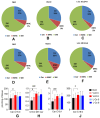Inhibiting De Novo Biosynthesis of Ceramide by L-Cycloserine Can Prevent Light-Induced Retinal Degeneration in Albino BALB/c Mice
- PMID: 39769156
- PMCID: PMC11676690
- DOI: 10.3390/ijms252413389
Inhibiting De Novo Biosynthesis of Ceramide by L-Cycloserine Can Prevent Light-Induced Retinal Degeneration in Albino BALB/c Mice
Abstract
Retinal degenerative diseases lead to irreversible vision loss due to photoreceptor cell death, driven by complex genetic and environmental factors. Ceramide, a sphingolipid metabolite, emerges as a critical mediator in the apoptotic cascade associated with retinal degeneration. Our previous work demonstrated L-Cycloserine's ability to protect photoreceptor-derived cells from oxidative stress by inhibiting the de novo ceramide pathway and thus prompting further investigation on its effect in the in vivo retina. This study investigates the potential of L-Cycloserine to protect albino BALB/c mice against light-induced retinal degeneration (LIRD). L-Cycloserine, in an optimal dose, administered systemically 30 min before LIRD, was found to prevent photoreceptor cell death significantly from light-induced degeneration. We further determined the retinal bioavailability and pharmacokinetic behavior of L-Cycloserine, its effect on sphingolipid profile, expression of sphingolipid biosynthetic, and cell death-promoting genes and proteins from the retina to understand the underlying mechanisms. This study lays the groundwork for further preclinical and clinical investigations into L-Cycloserine's potential as a novel therapeutic in treating retinal degenerative diseases.
Keywords: BALB/c mice; L-Cycloserine; ceramide; light-induced retinal degeneration (LIRD); pharmacokinetics; photoreceptor cell death; retinal degeneration.
Conflict of interest statement
The authors declare no conflicts of interest.
Figures







Similar articles
-
Sphingolipid biosynthetic inhibitor L-Cycloserine prevents oxidative-stress-mediated death in an in vitro model of photoreceptor-derived 661W cells.Exp Eye Res. 2024 May;242:109852. doi: 10.1016/j.exer.2024.109852. Epub 2024 Mar 8. Exp Eye Res. 2024. PMID: 38460719 Free PMC article.
-
Inhibition of de novo ceramide biosynthesis by FTY720 protects rat retina from light-induced degeneration.J Lipid Res. 2013 Jun;54(6):1616-1629. doi: 10.1194/jlr.M035048. Epub 2013 Mar 6. J Lipid Res. 2013. PMID: 23468130 Free PMC article.
-
Systemic administration of the antioxidant/iron chelator α-lipoic acid protects against light-induced photoreceptor degeneration in the mouse retina.Invest Ophthalmol Vis Sci. 2014 Aug 21;55(9):5979-88. doi: 10.1167/iovs.14-15025. Invest Ophthalmol Vis Sci. 2014. PMID: 25146987 Free PMC article.
-
Sphingolipids as critical players in retinal physiology and pathology.J Lipid Res. 2021;62:100037. doi: 10.1194/jlr.TR120000972. Epub 2021 Feb 6. J Lipid Res. 2021. PMID: 32948663 Free PMC article. Review.
-
Updates on sphingolipids: Spotlight on retinopathy.Biomed Pharmacother. 2021 Nov;143:112197. doi: 10.1016/j.biopha.2021.112197. Epub 2021 Sep 21. Biomed Pharmacother. 2021. PMID: 34560541 Review.
Cited by
-
A Review Discussing Synthesis and Translational Studies of Medicinal Agents Targeting Sphingolipid Pathways.Biomolecules. 2025 Jul 16;15(7):1022. doi: 10.3390/biom15071022. Biomolecules. 2025. PMID: 40723894 Free PMC article. Review.
-
Pyroptosis drives tumor progression and immune evasion in Hepatocellular Carcinoma: a single-cell and spatial transcriptomic study.Discov Oncol. 2025 May 20;16(1):834. doi: 10.1007/s12672-025-02421-6. Discov Oncol. 2025. PMID: 40394449 Free PMC article.
-
Resveratrol attenuates hepatic oxidative stress and preserves gut mucosal integrity in high-fat diet-fed rats by modulating antioxidant and anti-inflammatory pathways.Sci Rep. 2025 Jul 11;15(1):25162. doi: 10.1038/s41598-025-08450-z. Sci Rep. 2025. PMID: 40645973 Free PMC article.
References
-
- Daiger S.P. Retinal Information Network. 1996–2022. [(accessed on 1 March 2024)]. Available online: https://web.sph.uth.edu/RetNet/
MeSH terms
Substances
Grants and funding
LinkOut - more resources
Full Text Sources

